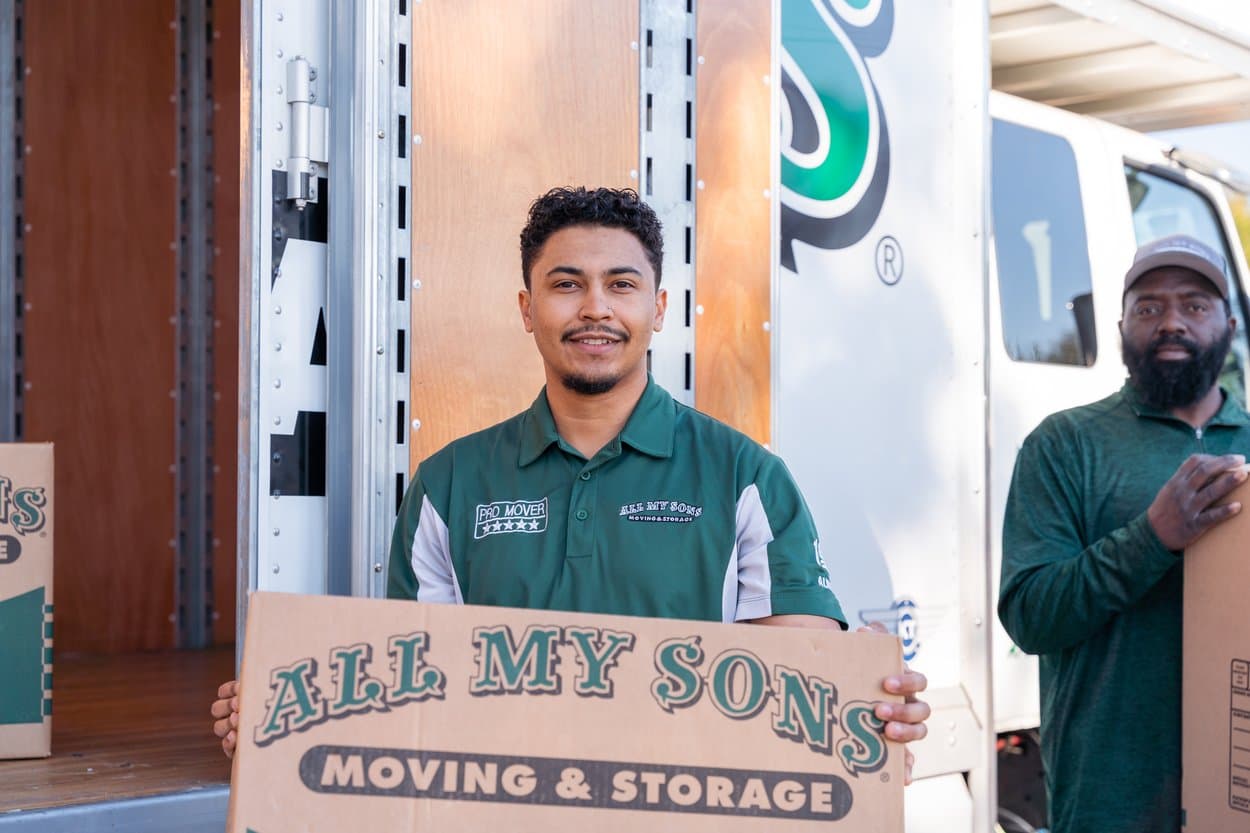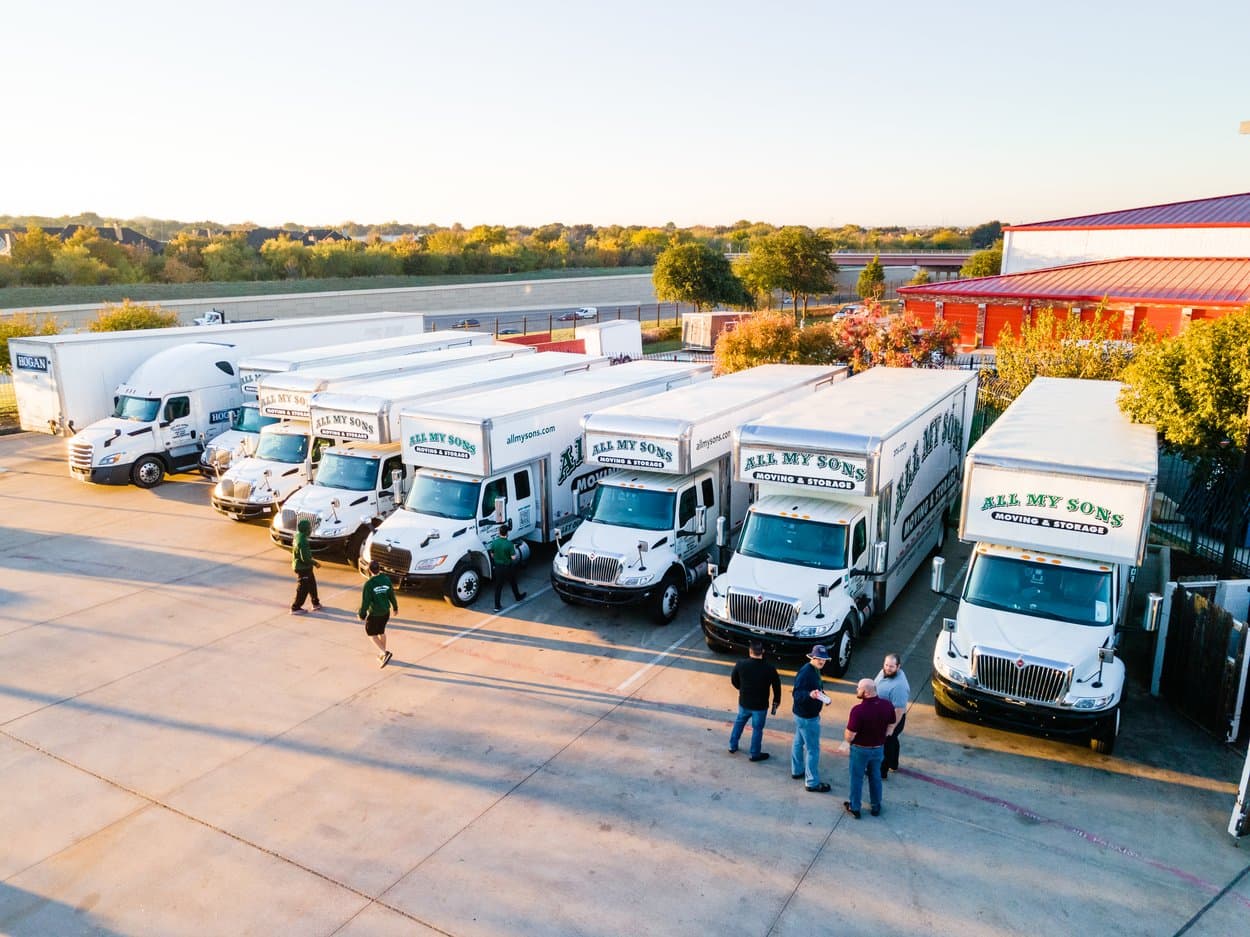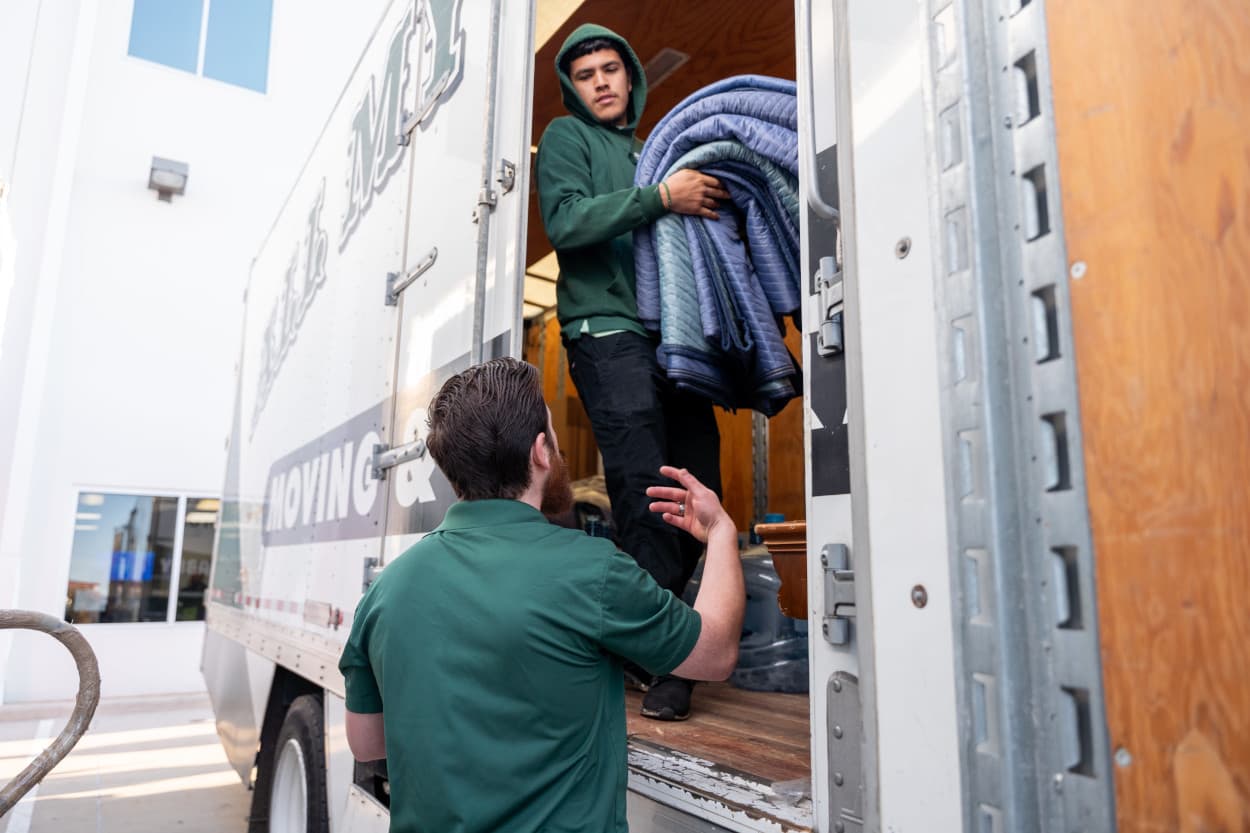Limited Moving Boxes?
Move day approaches and unfortunately you have found yourself with a set number of moving boxes. Uh oh, did you exhaust all your options for free or low-cost boxes? Maybe you’re planning a last-minute move or perhaps there’s just not much space in the budget for your moving supplies. It’s also possible that you want to move eco-friendly and have taken a vow to kill fewer trees. Whatever the reason, you are low on cardboard storage space, and you need a way to make all your moving boxes count.
You could cram your boxes to the bursting and hope for the best, but that’s almost guaranteed to result in broken belongings and back injuries. Lucky for you, there are best practices for packing, and they will help you save your back, your belongings, and your box space too.
At All My Sons Moving & Storage, we know that an organized move is an efficient move. Great organization starts with packing your moving boxes properly. By packing your boxes well, you can maximize space and reduce the number of moving boxes you need. Not to mention a well-packed box keeps your belongings snug and secure for the journey.
Get moving and make every box pulls its weight. Follow this guide to maximize space in your moving boxes.
Step One: Take Inventory
Before you construct any of your limited moving boxes, take inventory of what you need to move. If you have all the time in the world for your move, then you could create a household or moving inventory. A household inventory can help you decide how many moving boxes to obtain as well as keep track of your belongings while you make your move. In the event of an accident while moving or a home disaster after your move, you can use your household inventory to help you file insurance claims.
When you have limited time for your move, then simply take a notepad and jot down some rough lists of what you own. Walk through every room of your home and be sure to check all closets and cabinets to ensure you do not miss anything.
Once you have an idea of what you are moving, proceed to the following:
Sort Your Belongings into Categories: Group items by room or type. You can put all your living room items in one category or group delicate décor items from all rooms together.
Donate, Sell, or Discard Unwanted Items: The fastest way to save space on a move is to move less stuff. Take this opportunity to determine what you want at your new home and what you can live without. Declutter and downsize without mercy and you will find your move much more manageable.
Determine and Separate Your Essentials: Everyone has items they use almost every day. To get your new home as livable as possible within the first few days, separate out your essentials to be packed into essentials boxes or a bag that comes with you. You will pack these items last and unload them at your next place first.
Now that you have an idea of what you will pack, it’s time to start planning for your moving boxes. Once inventory is complete, pat yourself on the back and proceed to Step Two.
Step Two: Plan Ahead for Success
As you look at your inventory, take stock of your items and their needs. This will help you plan out how to organize the inside of your boxes.
Consider these questions for every item in your inventory:
Is this item fragile? Items that require extra protection should be packed with care.
Can this item be used to pack other items? Socks, towels, linens, and bed sheets all make good cushioning for your more delicate items like your dishes and glassware.
Can this item fit other items inside it? Pots, pans, baskets, and bins might be able to comfortably carry smaller items inside them, saving space in boxes.
How heavy is this item? As a general rule, heavy items should go to the bottom of the box and lighter items can fill in space at the top.
Step Three: Get the Best Boxes for the Job
Now that you have an idea of what you’re moving and what the needs of your items will be, it’s time to take a look at your boxes. If you have an eclectic collection of secondhand boxes, it will help to sort them out before you start choosing items to pack inside. In the event you have yet to obtain your boxes, then this is a great time to decide what boxes you will get with your limited budget.
When you have only so many boxes, putting the right items in the appropriate box type will make a huge difference.
Small Boxes: Heavy items like books should go in smaller boxes to avoid overloading.
Medium Boxes: Good for a mix of large items that don’t weigh too much and light items that can fill in empty space. For example, you might pack a medium kitchen box with pots, pans, hot pads, and towels.
Large Boxes: Ideal for bulky items that are lightweight like bedding and pillows.
Wardrobe Boxes: Designed to comfortably hold hanging clothes. More bulky but lightweight items can be folded and put in the bottoms of your wardrobe boxes.
Dish and Glassware Boxes: These specialty boxes typically have dividers and special packaging to protect your delicate dishes.
TV Box: To protect big electronics like your TV, you should pack them into specialty boxes like the TV Box or their original packaging if you still have it available.
The more uniform boxes you can pack, the better. Boxes that are roughly the same size and shape can be stacked on a dolly together and moved with speed and efficiency. They will also be easier to fit neatly in the back of your moving vehicle.
At this point, you know both what you are moving and what moving boxes you have to work with. It’s time to roll up your sleeves, crank up the music, and get down to the gritty business of packing.
Step Four: Pack the Heavy Stuff First
Ready the tape gun and construct your boxes.
Place your heaviest items to pack at the bottoms of your boxes. This helps to create a stable base and distribute weight evenly.
Check the weight of your box before you declare it done. If you are unable to lift the box, repack it with some lighter items inside and distribute the heavy items to the bottoms of other boxes. Overloaded boxes are a recipe for injuries, broken items, and a slower move.
When you are stacking boxes in your moving vehicle or storage unit later be sure to place the heaviest, most densely packed boxes on the floor. This helps to balance your box stacks so that a light box does not get crushed.
Step Five: Fill All Available Space
With all the heavy stuff forming a stable base at the bottoms of your boxes, you will be able to nest smaller items inside your boxes. Here are a few tips to conserve space and keep your items protected at the same time:
Roll Clothing: T-shirts and pants might fit more comfortably in your boxes if you roll them up instead of folding them. This can also help prevent clothes from getting wrinkled and allow you to fit even more clothing items in your boxes.
Stack Vertically: Books and plates can be stacked in boxes vertically. This can help prevent plates from breaking and allow you to fit more items in a single box.
Compress Bulky Items: Some of your large, lightweight items like bedding and winter clothes you may be able to store in vacuum-seal bags. This can significantly cut down on the space you need. Be careful not to compress items that are delicate as storing in vacuum-seal bags can cause permanent wrinkles in some materials.
Avoid Leaving Empty Space: Use socks, towels, or other small and lightweight items to close gaps in boxes. If there is a space where nothing you need to pack can comfortably fit, then use packing paper, bubble wrap, or foam peanuts to fill in the space. If there are gaps in your boxes, then items can easily shift during transit which could lead to damaged items.
Step Six: Label, Organize, and Move
Seal your packed boxes and label them. Write out both the contents of your box (if you are not creating a full moving inventory) and the room the box belongs to. You can use different colored tape to color-code boxes by room or type so that you can identify boxes at a glance.
Label your boxes of essentials and make sure they are loaded last and unloaded first. When you arrive at your new place and have these essentials boxes ready to unpack first then your new home will begin to feel livable immediately. This will make your first few days in your new home so much easier.
When you arrive at your new place, have your movers deliver boxes to the rooms that they belong to. Presto! Your new home is ready to unpack.
What Should I Do If I Run Out of Moving Boxes?
Planning ahead might help you avoid or mitigate the problem before it occurs, but this is real life and sometimes things get away from the plan.
With limited boxes, there’s a possibility you will run out before you’re able to pack everything. In the event you are out of boxes with no time or budget to make a run for more, there are a few household items that could help you finish your move.
Suitcases: Some of your heavy items like books, pans, and décor might be able to squeeze into suitcases. Make sure you can comfortably carry the suitcase before you declare it ready to move.
Laundry Baskets: A good catch-all for stray items that are lightweight.
Plastic Bins: Bonus points if your bin has a lid. Some heavy items and items that require extra protection can be packed into plastic bins you have around the house.
Trash Bags: Ideal for those bulky items that are lightweight like pillows, bed sheets, and towels.
Tote Bags: Fill them up with cables, papers, and assorted décor.
Backpacks: Heavy items might be able to fit comfortably in a backpack.
Pillowcases: Clothes, towels, and any extra lightweight items still hanging around can be moved in pillowcases.
More unconventional containers could mean that your move needs to slow down. Oddly shaped containers will take extra time to transport and will require some careful thought when packing into a moving truck.
It is worth noting that some of these unconventional containers might not be able to travel safely in a moving truck. Professional movers might decline to move unconventional containers that are open like laundry baskets or tote bags. If this is the case, you might have to move these items yourself in your own vehicle.
Boxes Packed and Loaded
You may have limited boxes, but that shouldn’t stop you from having a speedy, efficient move. With some planning and forethought, you can move your household inventory by using the right boxes for your items, packing items well, and utilizing unconventional containers when the boxes run out.
No matter how many moving boxes you’re trying to fill, the expert professional movers at All My Sons Moving & Storage can help with all the wrapping, packing, and heavy lifting. Whether you’re looking for professional packing services or need storage solutions for your relocation, All My Sons Moving & Storage can step in and tailor our services to meet the unique needs of your move. We perform residential moves, apartment moves, and even office moves, so choose All My Sons Moving & Storage and make your move comfortably. Call your local All My Sons Moving & Storage location or get your quote online.
Quick Moving Tips

How to Pack Electronics for a Move
Follow this 5-step guide to ensure all your electronics make it to your destination safely.

How Far in Advance Should You Book Your Professional Movers
Securing your desired move date will be more difficult during certain parts of the year with limited advance notice, so we recommend you book several weeks out.

How to Pack Your Bed Frame for a Move
Getting the bed frame safely moved can save your back and knees when it comes time to get up in the morning post-move.


